Skull anthropology
1/24
Earn XP
Description and Tags
These flashcards cover key vocabulary and concepts related to the anatomy of human skeletons and movements as discussed in the lecture.
Name | Mastery | Learn | Test | Matching | Spaced |
|---|
No study sessions yet.
25 Terms
Supination
Palm of the hand turning toward the anterior aspect.
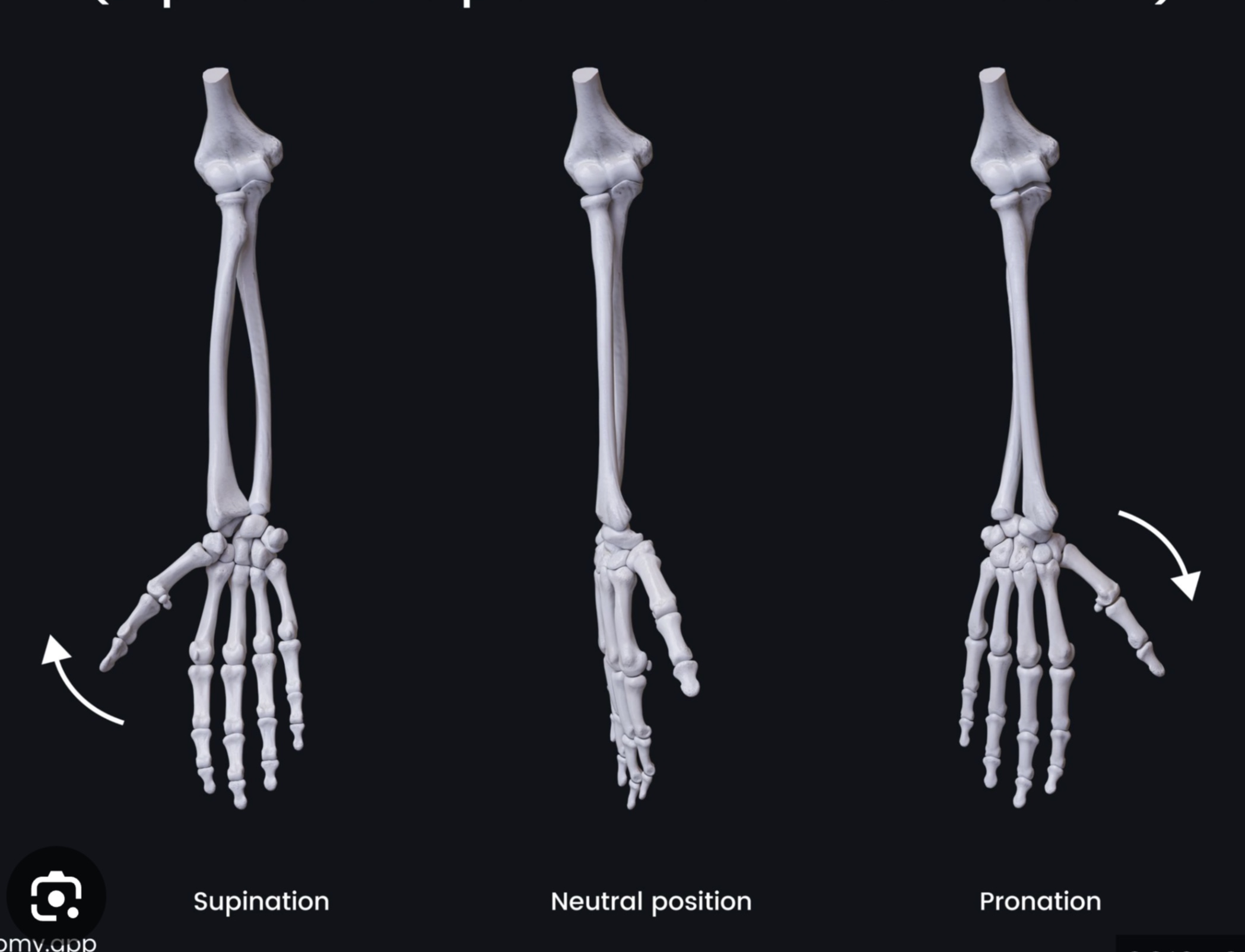
Inversion
Turns the sole of the foot inward.
Eversion
Turns the sole of the foot outward.
Protraction
A bone is drawn forward.
Retraction
A bone is drawn backward.
Rotation
The act of a bone turning around its axis.
Circumduction
A circular movement at a joint, produced by numerous individual muscle actions.
Natural Selection
The process by which the most adaptive features for survival and reproduction in an environment are selected.
Axial Skeleton
The part of the skeleton that consists of the skull, vertebral column, and rib cage.
Skull Bones
The 22 bones of the skull that are separated by sutures.
Sutures
Fibrous joints that connect the bones of the skull.
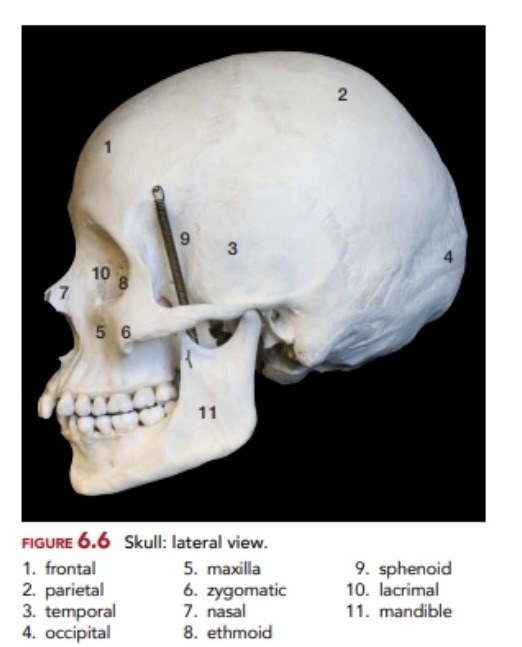
Frontal Bone
The bone that forms the forehead.
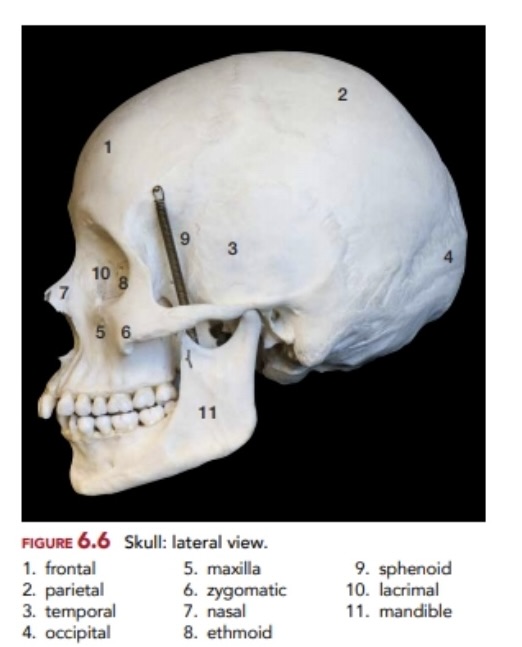
Parietal Bone
The paired bones that form the roof and sides of the cranium.
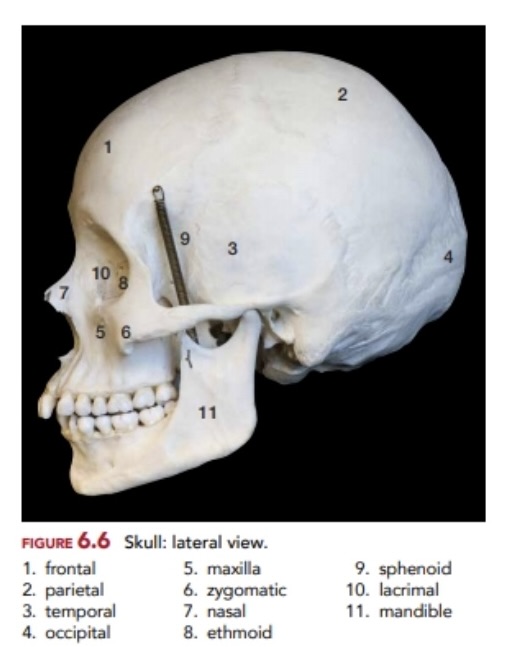
Temporal Bone
The bone located at the sides and base of the skull.
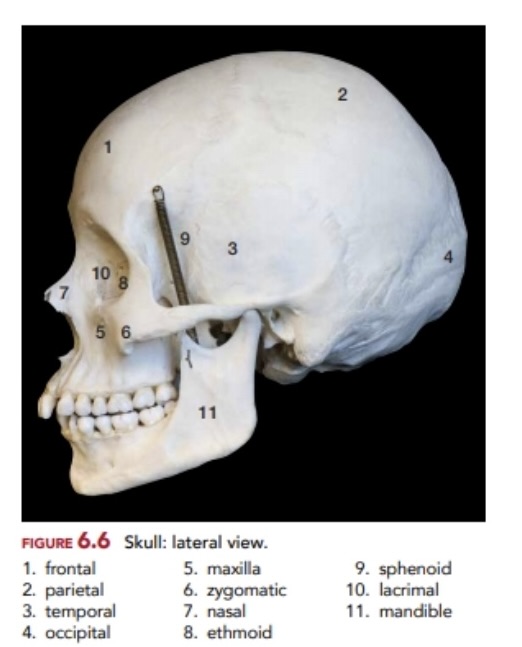
Occipital Bone
The bone located at the back of the skull.
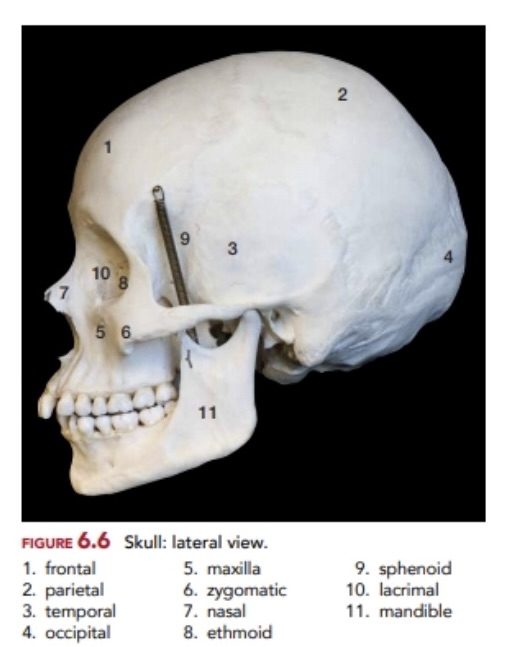
Sphenoid Bone
The bone located at the base of the skull that helps form the eye socket.
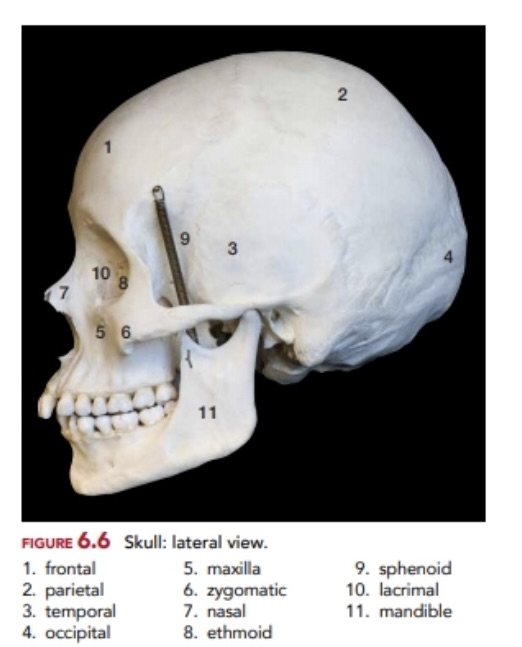
Maxilla
The bone that forms the upper jaw.
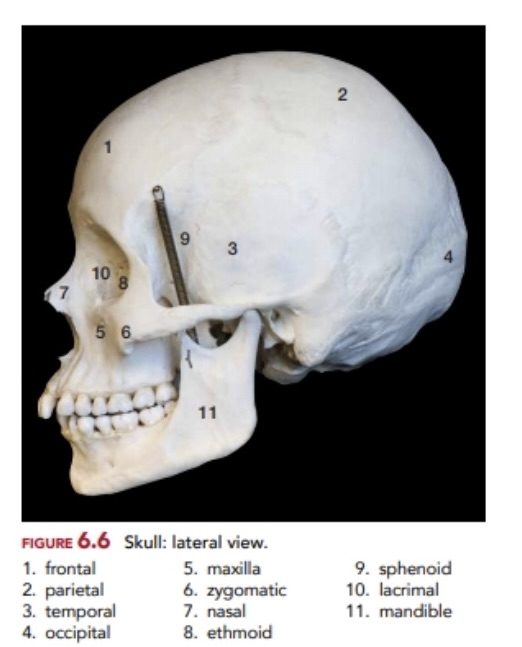
Zygomatic Bone
The bone that forms the cheek.
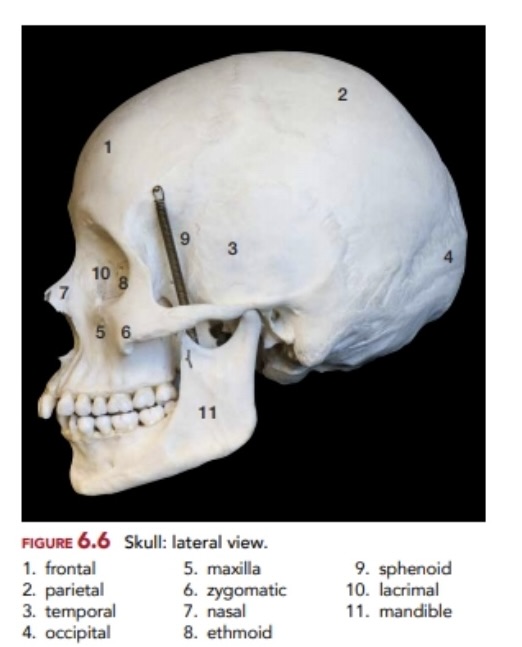
Lacrimal Bone
The small bone that forms part of the eye socket.

Nasal Bone
The bone that forms the bridge of the nose.
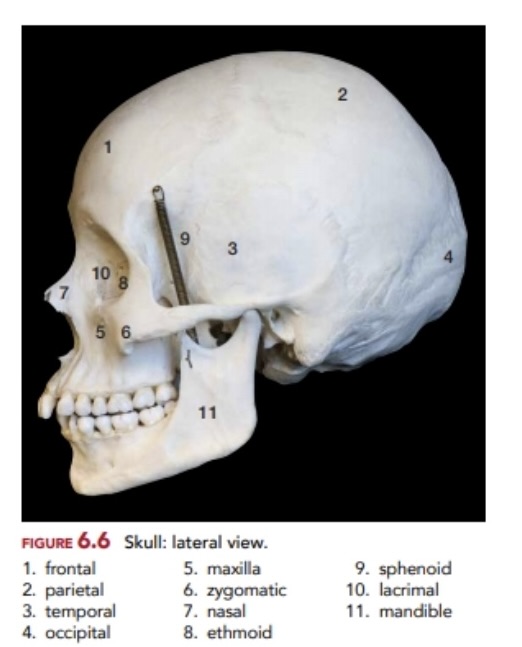
Mandible
The bone that forms the lower jaw.
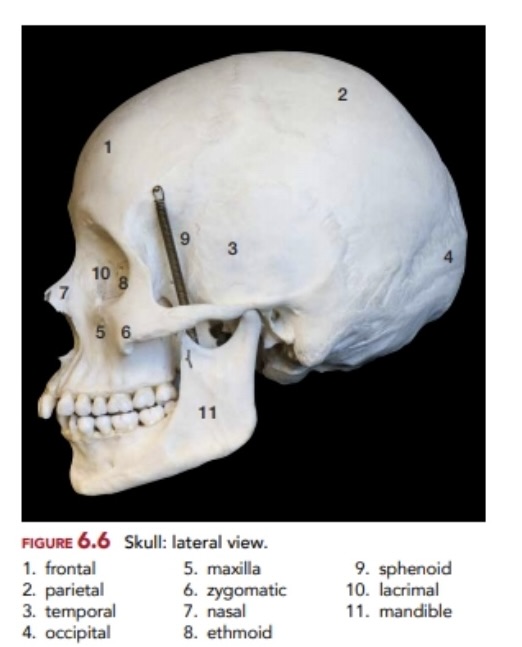
Ethmoid Bone
A bone located between the eyes that forms part of the nasal cavity.
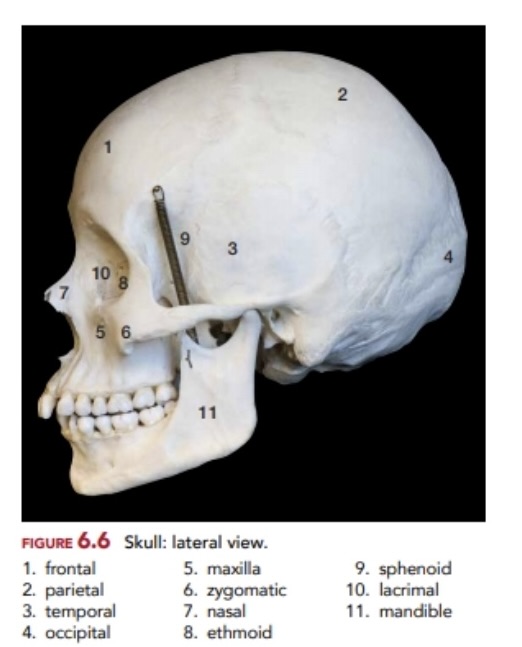
Inferior Nasal Conchae
Small curved bones that form part of the nasal cavity.
Single Bones
Bones in the midline of the skull that are not paired.
Paired Bones
Bones in the skull that are paired, with a left and a right.